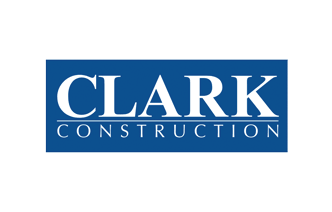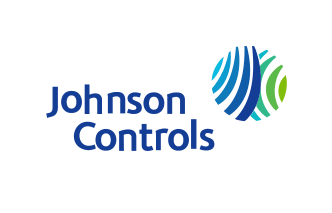Hiring Construction Workers: Tips & Tricks

Patrick Hogan is the CEO of Handle, where they build software that helps contractors, subcontractors, and material suppliers secure their lien rights and get paid faster by automating the collection process for unpaid construction invoices.
The construction industry is experiencing a labor shortage and high workforce turnover amidst an increasing demand for construction work. In a survey conducted by the Associated General Contractors of America, 79% of construction firms plan to expand their payrolls in 2019 but an almost equal percentage are worried about their ability to locate and hire qualified workers.
The labor shortage has a huge impact on construction costs, meeting deadlines, and even safety on worksites. And a smaller workforce means projects take longer than anticipated to complete. The increase in construction expenses to cope with a limited crew is burdensome for contractors, especially with rising material costs. Furthermore, if contractors are forced to hire less than qualified workers to fill positions, the potential for worksite accidents increases.
For these reasons, it is apparent that construction companies need to address the industry’s labor shortage issue before it gets worse. Not only do contractors need to attract skilled workers to gain a competitive advantage, but they should also create an environment and culture that encourages employee retention.
Fortunately, there are several solutions that can help contractors improve their workforce and address labor issues. Here are four ways construction companies can attract and retain skilled workers.
Create a positive workplace culture
The mission, vision, and values of a company are not just something listed in the employee handbook to be memorized by new hires. Rather, they are the guiding principles that should be the starting point from which company culture is created. With high worker turnover, however, it may be hard for companies to shape their own culture and subsequently hire workers that fit it.
Having an attractive workplace culture benefits the hiring process. New employees are more likely to stay if the environment is welcoming rather than being “just a place for a job.” So focusing on creating a positive culture cannot be overemphasized.
To create a positive workplace, it is important to take a step back and determine if the values that were specified when the business was founded are still reflected in the organization’s current culture. If there is a disconnect between company values and the actions of company leaders, employees will perceive the company in a bad light and inevitably walk away.
Company leaders should check the pulse of current employees regarding the current working environment. They must ask what they think needs to change and work on their suggestions immediately. Company culture may take time, but as long as company leaders consciously shape it with consistent and team-oriented leadership, employees will more likely stay.
If there is a disconnect between company values and the actions of company leaders, employees will perceive the company in a bad light and inevitably walk away.
Foster teamwork and camaraderie
Teamwork and camaraderie have always been some of the core values that all organizations want to foster. In the construction industry, these are doubly important. Workers face real dangers on the construction site, and, for this reason, it is vital that workers look after one another and work together to create a safe workplace.
Teamwork includes open communication and everyone contributing towards improving the safety of the workplace. One of the first steps is defining the goals of the project and ensuring everyone understands them. People need to know what they are working toward and how they contribute to the common goal.
The next step involves forming trust between team members and their superiors. This can be achieved by increasing open communication, encouraging feedback, and being transparent about the decision-making process. Building trust takes time and a lot of patience, but it will be worth it.
It is vital that workers look after one another and work together to create a safe workplace.
Create a formal mentorship program
The construction labor shortage has created an industry that is quite competitive when it comes to acquiring skilled workers. If the company does not provide opportunities for career growth, employees will look for greener pastures elsewhere. This is why it is important that companies invest in their own employees and create a path for advancement within the organization. High turnover directly affects the bottom line, and in an industry where cash flow challenges and payment issues abound, retaining skilled and experienced workers is paramount.
One of the best ways to achieve this is through a mentorship program. A good mentoring program serves as a platform for knowledge transfer from veteran workers to new employees. Mentorship programs benefit both the teacher and the student. While mentees gain new knowledge and build their network, mentors gain insights on fresh perspectives new employees may have. In addition, the personal relationship between mentors and mentees can last until retirement and contributes to creating a workforce that trusts one another.
If the company does not provide opportunities for career growth, employees will look for greener pastures elsewhere.
Include employees in the decision-making process
Field employees have valuable insights that top management who are offsite may not have. Getting their input provides a lot of benefits and makes the decision-making process more effective. More importantly, including employee input when making decisions that affect the whole company actually promotes retention and improves the bottom line.
Everyone wants to feel that their opinions and perspectives are valued. Asking about the thoughts of individual employees about specific issues will instill a sense of responsibility and let them see that their input has helped implement a beneficial change.
Including employee input when making decisions that affect the whole company actually promotes retention and improves the bottom line.
Retaining construction talent goes beyond attractive compensation packages. It requires a lot of time and patience from everyone involved. By understanding the benefits that matter to the members of the workforce — trust, teamwork, and career advancement — combating labor shortage and creating a capable team of talented workers is a reality.

 Patrick Hogan •
Patrick Hogan • 
















